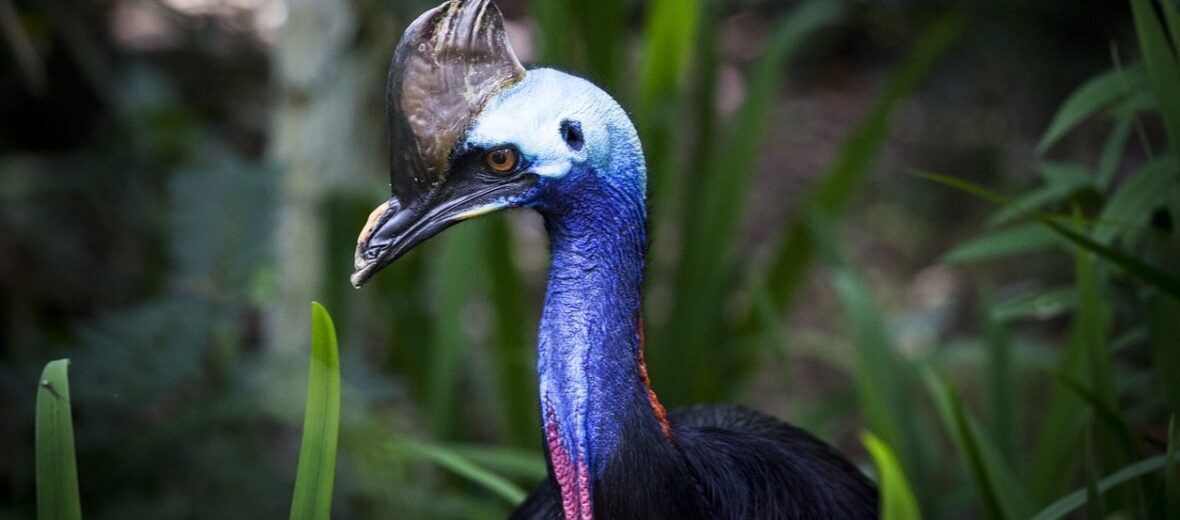
The cassowary is a territorial flightless bird that is capable of severely injuring or even killing opponents by disemboweling. Typically, these birds will only attack if they feel threatened. But they are very moody. There are 3 species of cassowary that can be found in New Guinea and the northeastern parts of Australia. The cassowary prefers wet tropical rainforests, lowland, and highland dense forests. Because they live in deep forests, they are rarely seen in the wild. All species are listed as Least Concern by the IUCN.
First the Stats…
Scientific name: Casuarius
Weight: Up to 100 lbs
Height: Up to 5.6 feet
Lifespan: Up to 50 years
Now on to the Facts!
1.) The color of their head and neck can change depending on their mood.
2.) Their casque (the bony ridge on the top of their head) is used for self-defense. It prevents skull injuries during fighting.
3.) Cassowaries are omnivores (eat both plant and animal matter). It usually eats a variety of seeds, fruits, shoots, fungi, small invertebrates, and insects.
4.) A cassowary can swim very well and for long distances!
5.) Seed dispersal is common among cassowaries. They eat fruit and then leave the seeds behind in their feces. This helps to spread populations of plants.
But wait, there’s more on the cassowary!
6.) They have excellent hearing and vision.
7.) Males build nests for the females who lay between 3 – 8 eggs. Also, the eggs are greenish-blue in color and are sometimes deposited in multiple nests.
Did you know…?
They can run 31 mph!
8.) The inner or second of the 3 toes is fitted with a long, straight, murderous nail which can sever an arm or eviscerate an abdomen with ease. There are many records of natives being killed by this bird.
9.) The call of a cassowary can be heard up to 2 miles away!
10.) The cassowary is the 2nd heaviest bird, after the ostrich, and the 3rd tallest bird. The ostrich is #1 and the emu is #2.
But wait, there’s more on the cassowary!
11.) Seeing as these birds are partially frugivorous (eat fruit), they are also a keystone species as they are important seed dispersers.
12.) After mating, the female leaves and dad takes over incubating and rearing of the chicks.
Did you know…?
They can jump up to 5 feet!
13.) Cassowary chicks learn how to find food from dad. Since mom flew the coop before they were even born.
14.) Like all flightless birds, these critters lack a breast bone which the flight muscles would normally attach to.
15.) Dingos, crocodiles, and humans are their only predators.
Now a Short Cassowary Video!
Also, check out the Critter Science YouTube channel. Videos added frequently!
Want to suggest a critter for me to write about? Let me know here.



